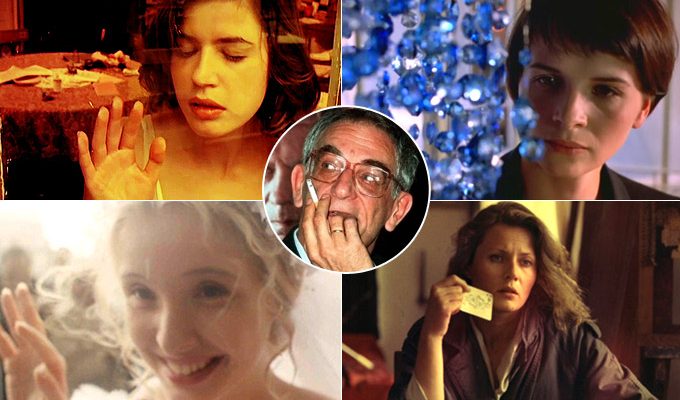 “Three Colors: Red” (1994)
“Three Colors: Red” (1994)
Described as the “fraternity of strangers,” this key line is perhaps the ultimate connecting throughline and obsession in Kieslowski’s work: how one person on the planet could be thinking the exact time as someone else in another part of the world and never know, but maybe could feel a curious sensation at the time. How deja vu or a ringing in the ears could mean something deeper. How those unknown to us are perhaps not strangers at all. A cynical person at heart, but with a deep curiosity of the human condition, some have suggested the theme of fraternity in “Red” was a self-critique of Kieslowski’s own selfishness. Whatever the case may be, the ravishing and sumptuous final conclusion of The Three Colors trilogy is haunting, poignant and unforgettable. Starring his muse Irene Jacob once more (after seeing her in ‘Veronique,’ Tarantino wanted her for Bruce Willis’ French wife in “Pulp Fiction,” but ironically, she was busy filming “Red”), the last chapter in the triumvirate centers on two polar opposite strangers who by chance — via an injured dog — become more and more connected and even bonding far beyond they would ever imagine. Part time model Valentine (Jacobs) accidentally runs over a German shepherd and then eventually tracks down the owner, a reclusive and retired judge (Jean-Louis Trintignant) soured by old age and the fates of how his life has turned out. He’s a nasty man, who Valentine discovers is abusing his powers and secretly recording his neighbors’ phone calls for entertainment value (and to continue his former vocation in some kind of perverse manner). Though morally disgusted with him, the two find themselves inexorably drawn to one another suggesting a missed connection in some part of time they did not exist in concurrently. Typically mysterious, “Red” is even tentatively optimistic and is a striking, poetic meditation on alienation, connection, kinship and togetherness beyond our basic understanding. Quentin Tarantino himself assumed “Red” would win the Palme d’Or at Cannes that year and when “Pulp Fiction” took the prize instead, the filmmaker was met with some boos and jeers from those that expected Kieslowski’s final film to take the top prize. Still, to this day, it remains of the most controversial choices in the history of the festival. Breaking out of the foreign film category ghetto, “Red” was nominated for three Academy Awards, including Best Director, and was the filmmaker’s final statement. He retired shortly thereafter and died less than 10 months later during open heart surgery.
Also recommended: Kino’s “The Krzysztof Kieslowski Collection” which includes the earlier films, including “The Scar” (1976), “Camera Buff” (1979, starring Jerzy Stuhr, who would reappear in several projects down the line), 1981’s “Blind Chance” (a sort of precursor to “Sliding Doors” that showed three outcomes to one man’s life based on luck and chance) and the aforementioned ‘Dekalog’ extended films, “A Short Film About Love,” and “A Short Film About Killing.” With over two dozen shorts and documentaries to his name (shot well before his feature-length dramatic career), one could argue an Eclipse set from Criterion would also be nice, but at this point, we’ll take what we can get.

